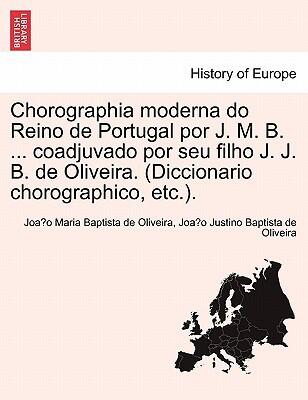
Chorographia Moderna Do Reino De Portugal Por J. M. B. . Coadjuvado Por Seu Filho J. J. B. De Oliveira. (diccionario Chorographico, Etc.). Volume I.
by
João Maria Baptista de Oliveira
No ratings yet
Action & Adventure
Science & Technology
History
+1
more
Format
Paperback
Pages
832
Language
Portuguese
Published
Jan 1, 2011
Publisher
British Library, Historical Print Editions
ISBN-10
1241356343
ISBN-13
9781241356347
Description
In a detailed exploration of Portugal's geographical and cultural landscape, this volume offers an insightful narrative that intertwines history, cartography, and local customs. Authored by João Maria Baptista de Oliveira and enriched by the contributions of his son, J. J. B. de Oliveira, it serves as both a visual and intellectual map of the region during their time. Readers are invited on a journey through both urban centers and rural areas, unveiling the unique characteristics that distinguish each locality.
The work is not just a simple geographical account; it delves into the intricate relationships between the land and its people. The descriptions weave together various elements such as architecture, folklore, and natural features, painting a vibrant picture of Portugal's diverse heritage. With meticulous attention to detail, the authors present their findings in a way that brings the landscapes to life, allowing readers to envision the settings vividly.
As a significant contribution to the study of Portuguese geography, this volume serves as a vital resource for historians, geographers, and anyone intrigued by the complexities of Portugal’s identity. It embodies a dedication to understanding the intricate tapestry of places that define this remarkable European nation.
The work is not just a simple geographical account; it delves into the intricate relationships between the land and its people. The descriptions weave together various elements such as architecture, folklore, and natural features, painting a vibrant picture of Portugal's diverse heritage. With meticulous attention to detail, the authors present their findings in a way that brings the landscapes to life, allowing readers to envision the settings vividly.
As a significant contribution to the study of Portuguese geography, this volume serves as a vital resource for historians, geographers, and anyone intrigued by the complexities of Portugal’s identity. It embodies a dedication to understanding the intricate tapestry of places that define this remarkable European nation.
Reviews
Reading Log
No reading logs found
Start tracking your reading progress to see logs here
Add Your First Reading LogNotes
Transaction Log
No transaction logs found
Start tracking your book transactions to see logs here
Add Your First Transaction Log